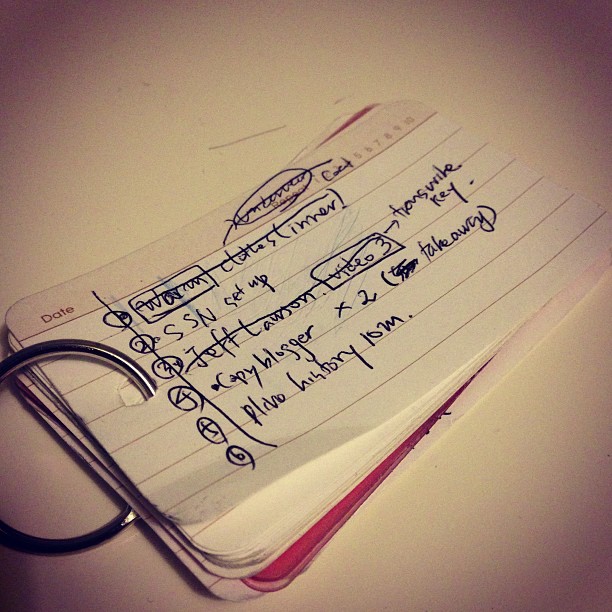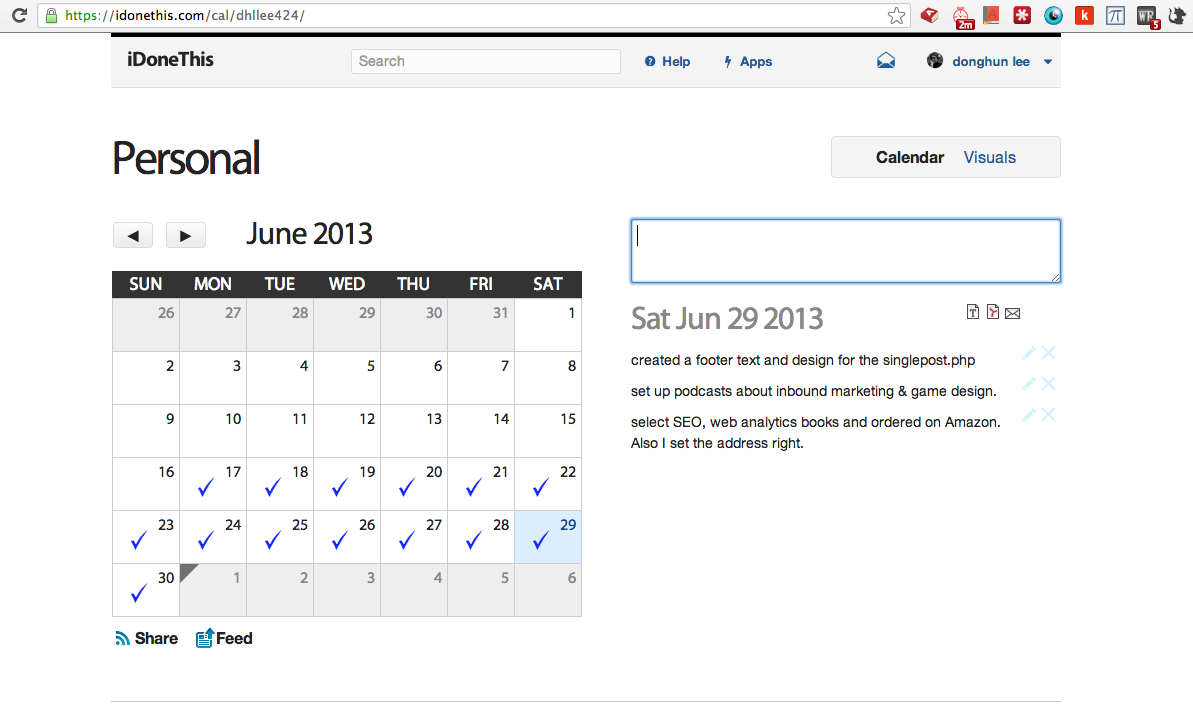To-do management tools like Things or Omnifocus are good. Or so people say. Such feature-rich apps definitely have their own target users they can serve very well.
But they never worked.
Maybe it’s about me— or you as well. I never managed to use those apps without disturbingly forcing myself to stick with the tools. I had to keep telling myself “Hey this is a good tool. Don’t forget to use this.”. It would exhaust an alarming level of my willpower. Whenever I left my smartphone somewhere remote and got a new task, I had nothing to turn to. Total frustration.
Of course, sometimes I would improvise. I would write it down to a small piece of paper I tore off of some notepad around me. And when I didn’t even have a pen and a paper, I would get terrified at the idea of having to remember the task and freak out over “what if I forgot” doubt.
Oh, there’s more. Another pain point ironically came from the great convenience the tools offer. It was all too easy to add and drop tasks. Their features must have been artfully optimized to make it easiest to tinker with tasks. Such malleable nature of to-do apps backfired on me, because it has diluted the perceived importance of the tasks. At a click, I could drop the tasks off to the trash. And I wouldn’t remember I’ve once had that on my to-do list in most cases. At another click, I could add a new task whenever I want. Whether it’s in the middle of the day or night did not matter. I felt like I could get away with to-dos not being done, unscathed.
Tasks felt more fluid than solid. And I couldn’t feel motivated enough.
So, for the past 7 months I’ve tried different to-do management systems. The right system for me had to be extremely portable, and most importantly, frictionless in the sense that it wouldn’t consume significant amount of my willpower. It was a more of a design challenge, than a technology challenge. Right? I didn’t need more or better features. I just needed a smart to-do system design that works for me, without me having to manage stuff to manage my to-dos.
And finally I think I can have my say on this matter. 7 months is long enough for me to make a case that I’ve found the tools that can and do work for me.
Therefore here I share thee three remarkable tools that I worked wonders for my productivity. The three tools I will introduce below have kept me constantly aware of productivity effortlessly and have been super handy.
1. a small note and a pen:

Sometimes old ways work better than in bits-and-bytes way. All you need is a small note and a pen. You write down 5 or 6 things that are important to complete tomorrow, every time you go to bed. The next day you go about getting those things done and cross each off the list. It’s almost guilty pleasure. The dopamine will chip away at your laziness.
Why is this good? First of all, this is highly portable. And it practically doesn’t cost you anything. You don’t have to worry about losing it as you would with your fancy iphone. Its limited physical space will force you to figure out what are the things that will give you a hard time, unless they are done tomorrow.
Another advantage of using this method is that you can create a proxy that will declare an idle time. I mean the kind of time you can spend doing whatever you want to do. Let’s assume you’re done with 5-6 most important things earlier than you expected. It’s time to call it a day. Thanks to this smal note, you won’t freak out looking for additional things to do—which happens to a lot more people than we think. You will be able to relax and celebrate your amazing productivity today.
Basically I borrowed Marc Andreessen’s wisdom.
2. idonethis

idonethis is in line with what Marc Andreessen called anti-todo list. How the anti-todo list works is: rather than sitting down and waiting to hit a big score, which is hard to predict and occur frequently, every day you recognize small achievements. You look at your to-do card and say “man, look at these things you’ve done today.”. You recognize each task done by writing it down on the app task log box.
It has both web and mobile versions. I use the web version, when I come back from work at night. First I sit down and start harvesting up however small things I managed to get done at a given day. The usual syntax that will make you indulge more on this would be the classic “I got [something] done.” or “I did [something] and learned.” And you wouldn’t want to miss out the first-person subject, because you need to make clear that it is YOU who made this happen. Sounds narcissistic, right? but it works beautifully.
3. Evidence-based task scheduling.
 In order to manage time, one should go about managing tasks. And it’s critical to be able to estimate the time to complete a given task.
In order to manage time, one should go about managing tasks. And it’s critical to be able to estimate the time to complete a given task.
Yes I know what you think. No, most of us are not good at estimating the length of time. You will either overshoot or undershoot. And that’s something that can only be figured out through data. I also thought I had a good handle on how long a time it takes me to finish a task like writing a blog. It turned out that I was quite horribly poor at it.
Had I been solely relying on my gut feeling, then I would not have been able to know how long it really takes me to get such a task done. Plus, I wouldn’t have learned that I needed to slice and dice the task into even more granular parts like “choose a topic and write first 5 paragraphs as a draft.”. A good rule of thumb is that anything that takes more than two hours to complete should be divided into smaller tasks.
How you use this is that you first kick your initial guess in “initial” column. While you’re working on the task, if you think you need to change the estimation, you can put in the adjusted length in “adjusted” column. And finally when the task is complete, you can type in the actual duration of time. The difference will tell you how good you were.
All in all, I am using this method to train my intuition and get better at producing good estimation. I borrowed the idea from Joel Spolsky.